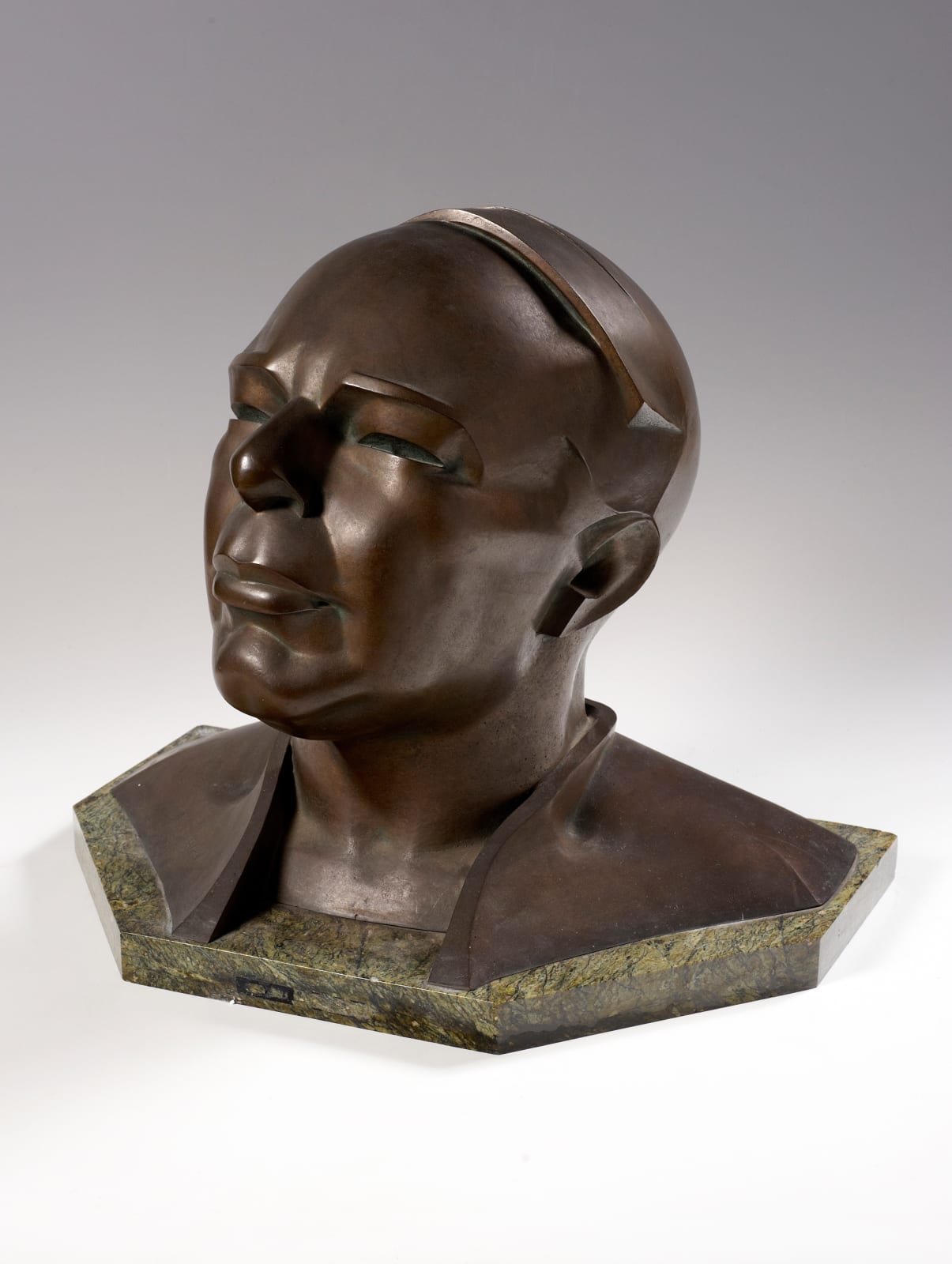Zeev Ben Zvi 1904-1952
Further images
The subject of this portrait head, (Isaac) Leslie Hore-Belisha (1893–1957), became a Liberal MP in 1923 and helped to form the National Liberal Party 1931 in support of the national coalition. As Minister of Transport (1934–37), he gave his name to the ‘Belisha beacon’ on pedestrian crossings and was responsible for introducing the 30 mph speed limit. As British Secretary of State for War (1937–40), he instituted military conscription in the spring of 1939, a few months before the outbreak of hostilities, but lost his post in 1940.
Sculptor Zeev Ben-Zvi lived in England between 1937 and 1939, featuring in Ben Uri’s annual exhibition of 1937 and having a notable one-person exhibition at the Matthiesen Gallery in London in 1938. At this time he began to use more rounded forms and to minimise detail, as can be seen in his head of Lord Hore-Belisha. During the 1940s Ben-Zvi’s work became more abstract. His sculpture continued to feature in Ben Uri loan exhibitions, including the 1944 Opening Exhibition and the 1953 Coronation Exhibition of Paintings and Sculpture; the latter was characterised, according to the catalogue, as being ‘European rather than British’. After his return to Jerusalem, he became a lecturer at Bezalel and his work included monuments.
Provenance
presented in 1959Literature
Rachel Dickson and Sarah MacDougall, eds., Out of Chaos: Ben Uri; 100 Years in London (London: Ben Uri Gallery, 2015) pp. 84-85.;
David Bonan, ed., Israel & Art: 60 years through the eyes of Teddy Kollek (London: Ben Uri Gallery, 2008);
Walter Schwab and Julia Weiner, eds., Jewish Artists: the Ben Uri Collection - Paintings, Drawings, Prints and Sculpture (London: Ben Uri Art Society in association with Lund Humphries Publishers Ltd, 1994), p. 24.









